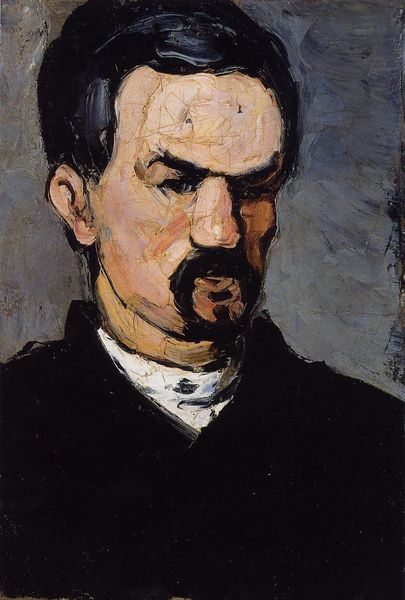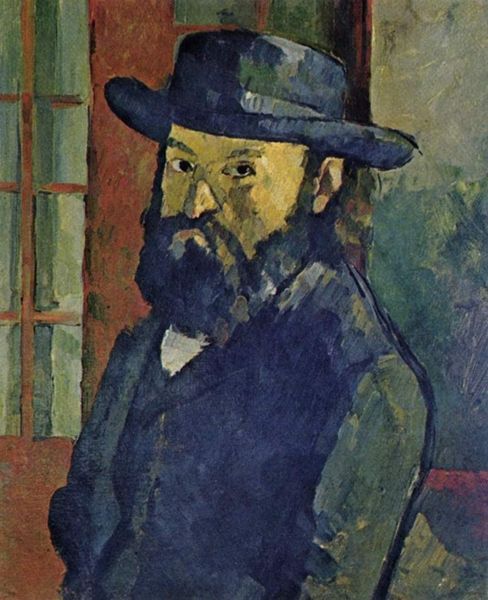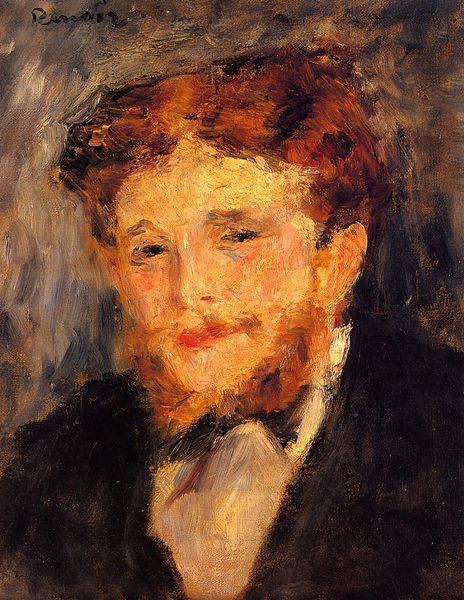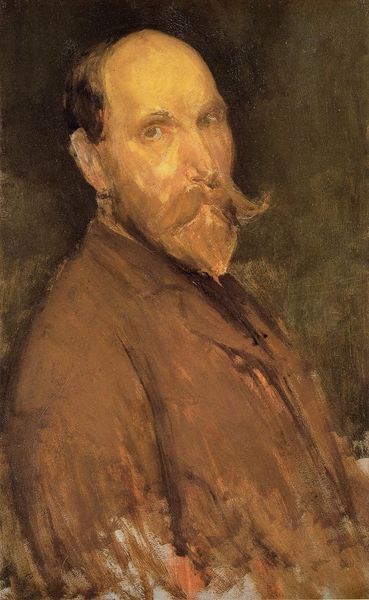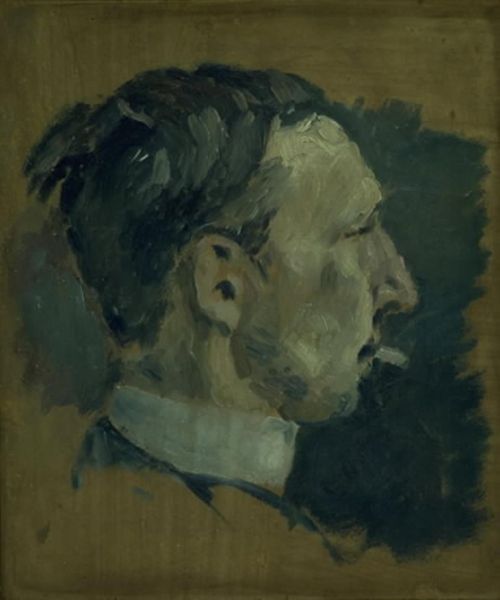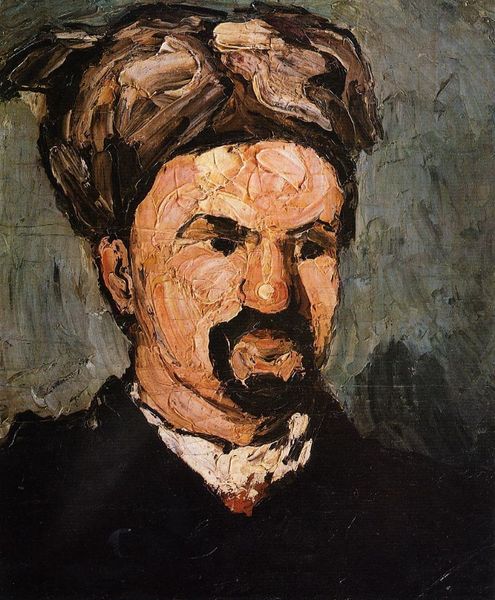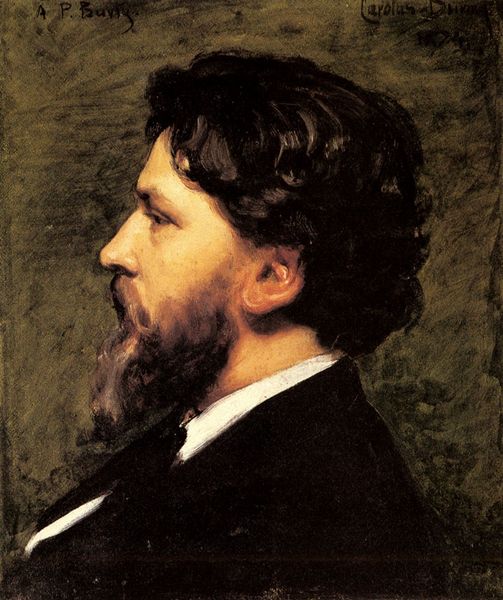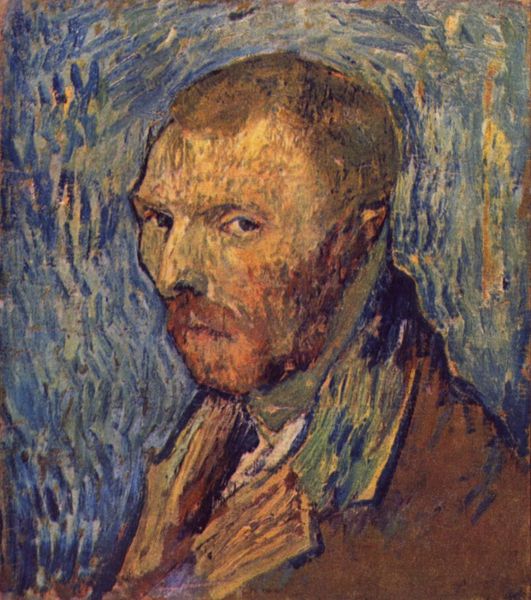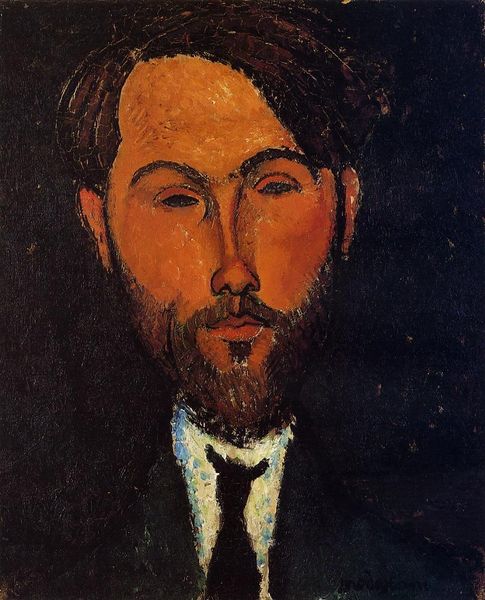
Copyright: Public domain
Curator: Standing before us is Paul Cézanne's "Portrait of Uncle Dominique," completed around 1866. It's an oil painting showcasing the artist’s distinctive, evolving approach. Editor: The first thing that strikes me is the sheer weight of it. Not literally, of course, but the heavy impasto, like trowels of paint slapped onto the canvas. It’s… sculptural, almost aggressive. Curator: Precisely. Observe how Cézanne builds form through differentiated planes of color. He foregoes traditional modeling for a structured articulation of light and shadow. The subject's likeness is almost secondary to the artist's exploration of form. Editor: But that directness, that refusal of conventional beauty, that’s what gives it its raw power. Uncle Dominique looks less like a specific individual and more like… well, the archetype of a stern patriarch, gazing askance, forever skeptical. Curator: One might analyze the palette itself, predominantly earthen tones offset by flashes of white in the collar, to understand the artist’s spatial logic. These contrasts do not merely depict light, but construct the volumes themselves. We see an evolution beyond representational constraints. Editor: I see a wrestle. A visual tug-of-war between what Cézanne wants to express and what the canvas is willing to hold. You sense the impatience, maybe even frustration, in those loaded brushstrokes. But, god, there is vitality! He's breaking down the rules as he paints the painting. Curator: An astute observation. Cézanne here initiates a dismantling of established academic portraiture, foreshadowing his later geometrical dissections of the landscape. We must consider this within a framework of emergent modernism and impressionism. Editor: Framing things is interesting… but I tend to wander and daydream when looking at such works. Uncle Dominique, if you were in my family, what would our Christmases have been like? This artwork pulls me to ask questions rather than demand answers, which to me, means the painting did its job. Curator: Indeed, its enduring fascination rests perhaps in this very dialectic—between analytical rigor and intuitive force. Editor: Cheers to that! Next portrait, perhaps someone less grumpy-looking?
Comments
No comments
Be the first to comment and join the conversation on the ultimate creative platform.


